Disclaimer: This post may contain Amazon affiliate links. Sudachi earns a small percentage from qualifying purchases at no extra cost to you. See disclaimer for more info.
What is Pork Udon?
Pork udon (豚肉うどん) or “butaniku udon” is a type of hot soupy noodle dish made with thick wheat noodles (udon) served in a tasty dashi broth and topped with marinated pork and sautéed onions.
Pork udon is a variation of “niku udon” (肉うどん) which means “meat udon” in Japanese. Niku udon can actually be made with either beef or pork, and the meat preference for this dish depends on the region. In Eastern Japan (Kanto), pork is most commonly used while in the West (Kansai) they tend to use beef more.
Since I’m from central Japan, I don’t have a strong preference for either. I often eat both and find that beef udon is rich and meaty, while pork udon is a bit lighter but packed with umami. They’re both delicious, so I couldn’t possibly choose one!
In this recipe I will be using pork and a special broth that highlights the flavors of pork belly; however, if you’re interested in making it with beef instead, check out my Beef Udon recipe.
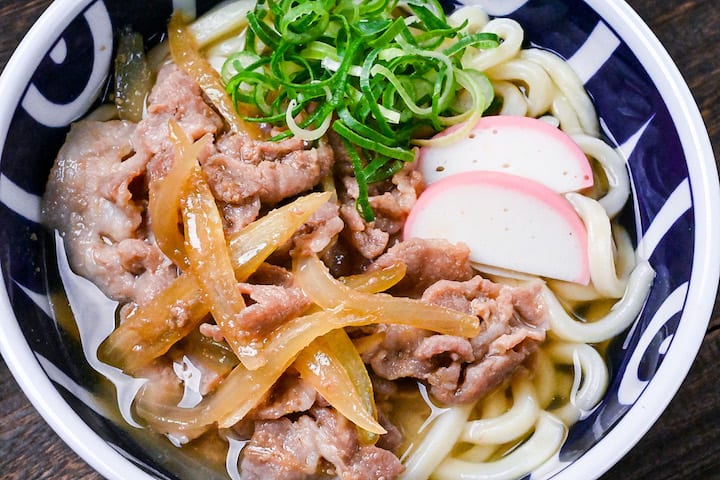

How I Developed This Recipe
When I first thought about making Pork Nik Udon, I knew I wanted to celebrate the natural sweetness of pork. So I chose white dashi for its light and subtle flavor, a delightful change from the dark soy sauce I used in my beef udon.
This recipe is straightforward and perfect for a cozy lunch. The pork takes center stage, its flavor enhanced, not overshadowed. Why not try making it for lunch?
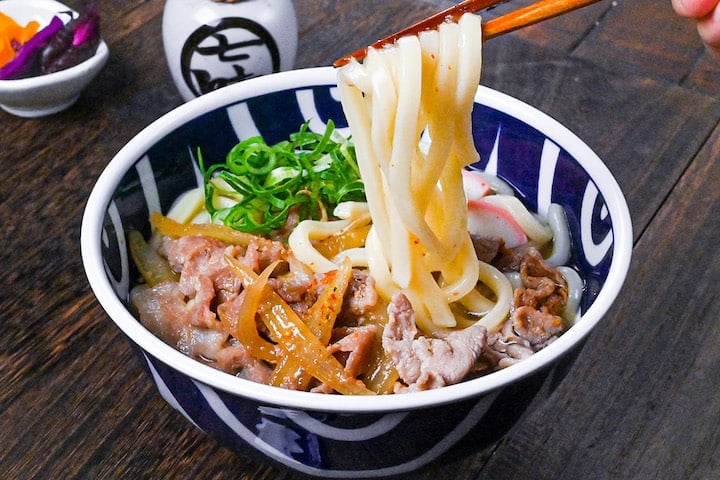
Ingredients & Substitution Ideas
- Thinly sliced pork belly – In Japan we typically use thinly sliced pork (a similar thickness to bacon). This should be available at Japanese or Asian supermarkets, but if you can’t access already sliced pork where you live, place a block in the freezer until firm (not frozen) and thinly slice it yourself at home. I recommend a fatty cut like belly or shoulder which will melt into the broth and make it more flavorful.
- Shirodashi – This salty and flavorful Japanese condiment is made with light soy sauce, mirin, sugar and a bonito flake and dried kelp dashi. Essentially, it is a type of tsuyu sauce (concentrated noodle sauce) used for dipping and broths. You can make it yourself at home or purchase it on Amazon. In a pinch, you can substitute for an equal amount of light soy sauce or use a bit more tsuyu sauce or dark soy sauce (the color will be darker) in both the marinade and the broth.
- Mirin – adds depth and sweetness. I recommend using “hon mirin” (real mirin) rather than mirin-style condiments.
- Oyster sauce – adds a savory flavor that helps balance the overall taste in the marinade.
- Sugar – I use light brown cane sugar, but regular white sugar can also be used.
- Grated ginger – helps soften the taste of the pork and adds depth of flavor. I often use store-bought ginger paste as a shortcut, but of course, freshly grated works great too.
- Yellow onion – once fried, finely sliced onions add depth and natural sweetness to the dish.
- Salt – regular sea salt works fine here.
- Dashi stock – The foundational flavor for the broth. Choose from simple awase dashi or vegan dashi. For quicker options, instant dashi granules or packets are perfectly suitable.
- Udon noodles – These thick wheat noodles have a wonderful chewy texture and are one of the most important elements of the dish. You can go for pre-boiled udon, dried udon, or frozen udon.
- Kamaboko – A type of pink and white Japanese fishcake that is commonly served on udon dishes. Kamaboko is more for decoration and an authentic touch, but feel free to omit.
- Finely chopped green onion – A classic topping for udon dishes and adds a refreshing flavor and pop of color.
- Shichimi Togarashi – A blend of Japanese spices and chili that adds a kick to udon dishes. I recommend S&B’s shichimi.
Curious about the exact brands and products that bring my recipes to life? Discover the brands and ingredients behind my recipes at the Sudachi Amazon Storefront. Explore my handpicked pantry essentials and find your next kitchen favorites!
Jump to Full Recipe Measurements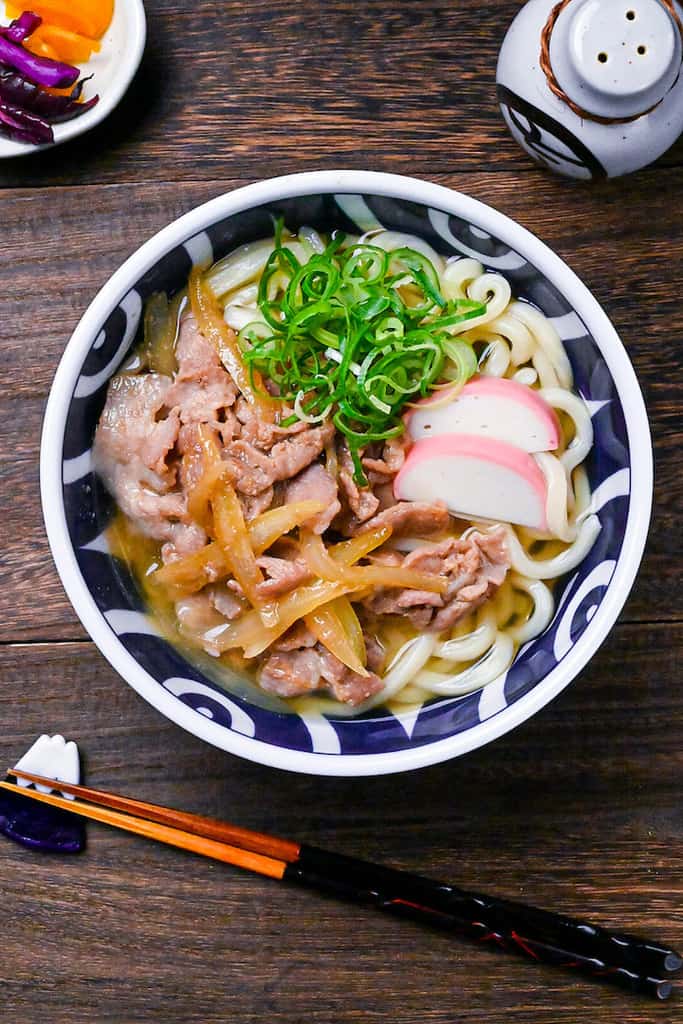
Visual Walkthrough & Tips
Here are my step-by-step instructions for how to make Pork Niku Udon at home. For ingredient quantities and simplified instructions, scroll down for the Printable Recipe Card below.
Place the thinly sliced pork belly in a container and add shirodashi, mirin, oyster sauce, sugar, ginger paste and water. Mix until evenly distributed, then cover and marinate in the fridge for 10-30 minutes.
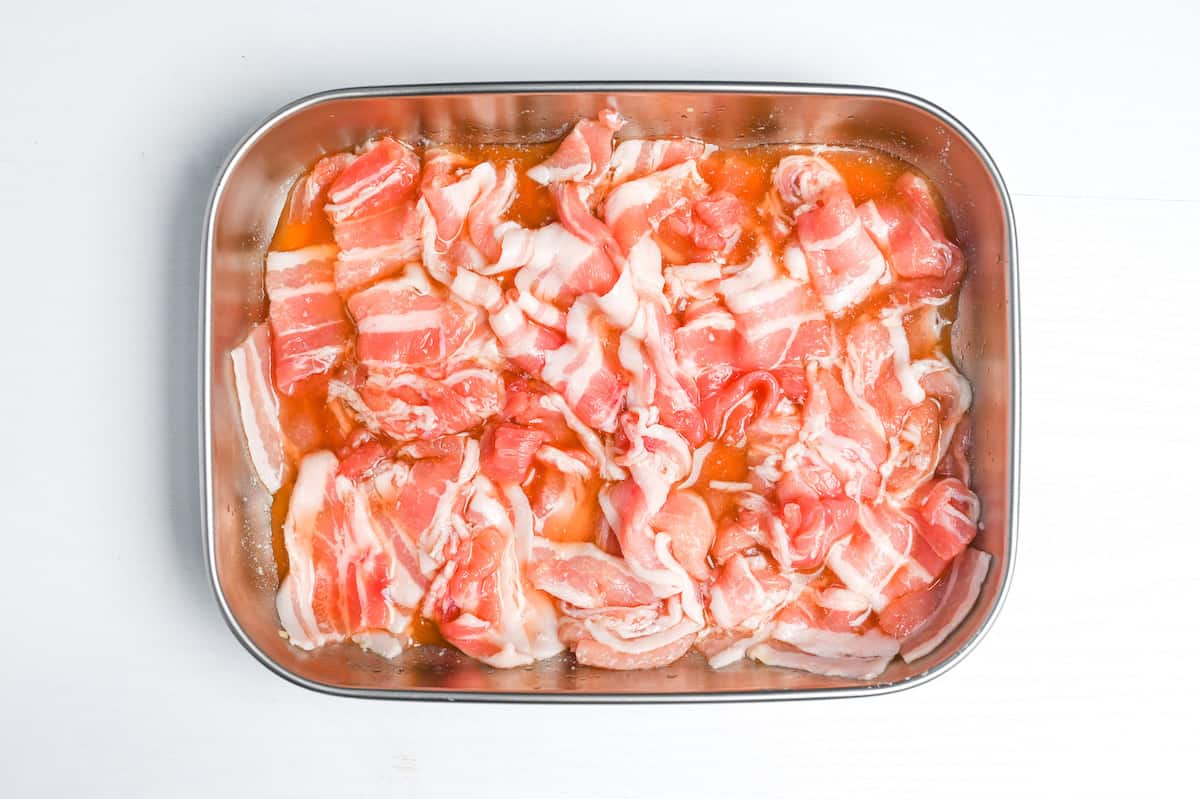
Thinly slice the onion and place in a mixing bowl with a sprinkle of salt. Mix until all the onion is covered and set aside until it’s time to cook. This step helps soften the flavor and draw out excess moisture so that they brown quicker.
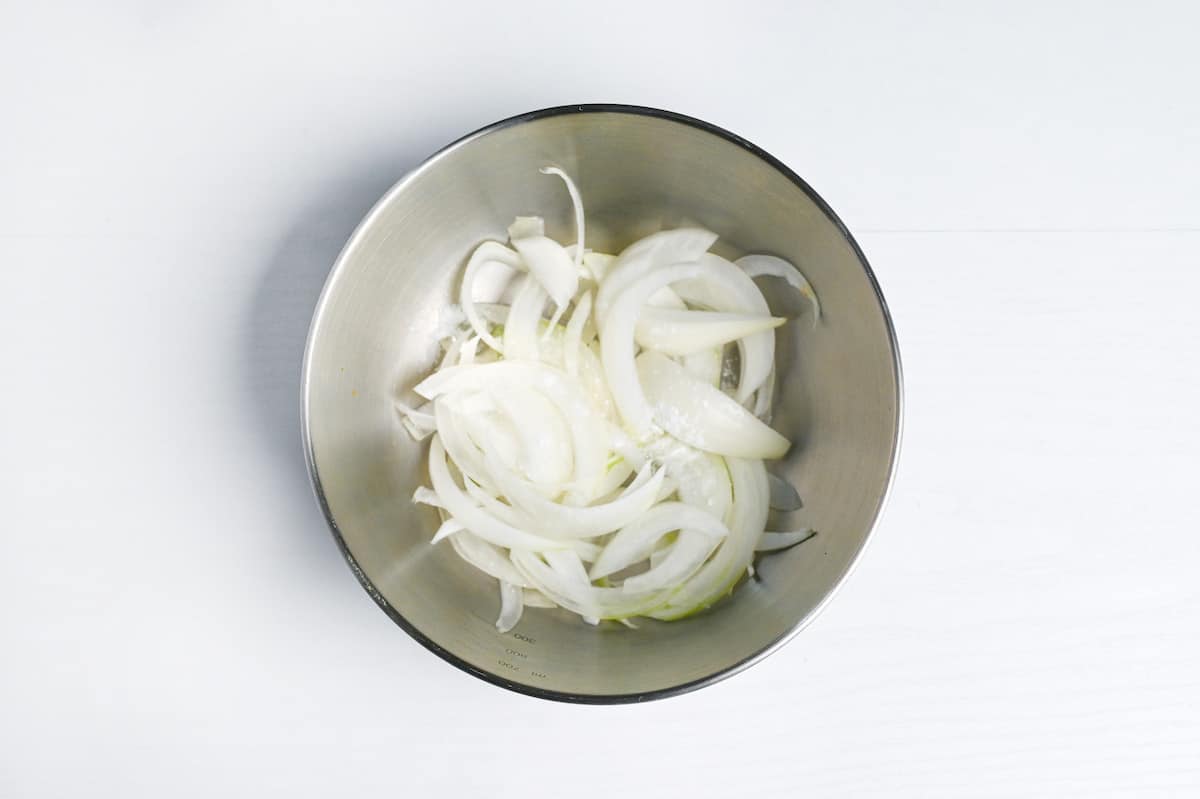
Heat the dashi in a saucepan over a medium setting and add shirodashi, mirin, and sugar. Boil for 2 minutes and then turn off the heat. Leave the pot on the stove and place a lid on top to keep it warm. (Reheat right before serving if necessary.)
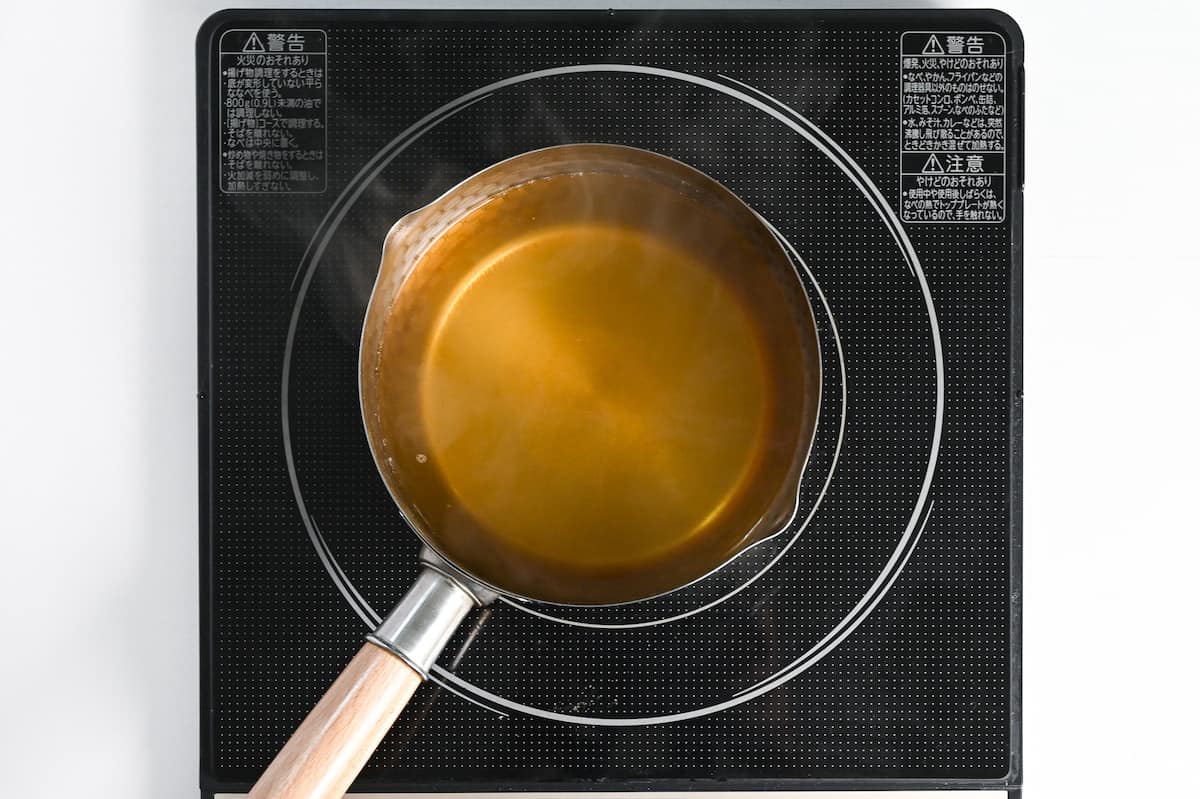
Heat a pan on medium and add a drizzle of cooking oil. Add the salted onion and fry until softened to your liking. I usually aim for slightly soft and lightly golden.
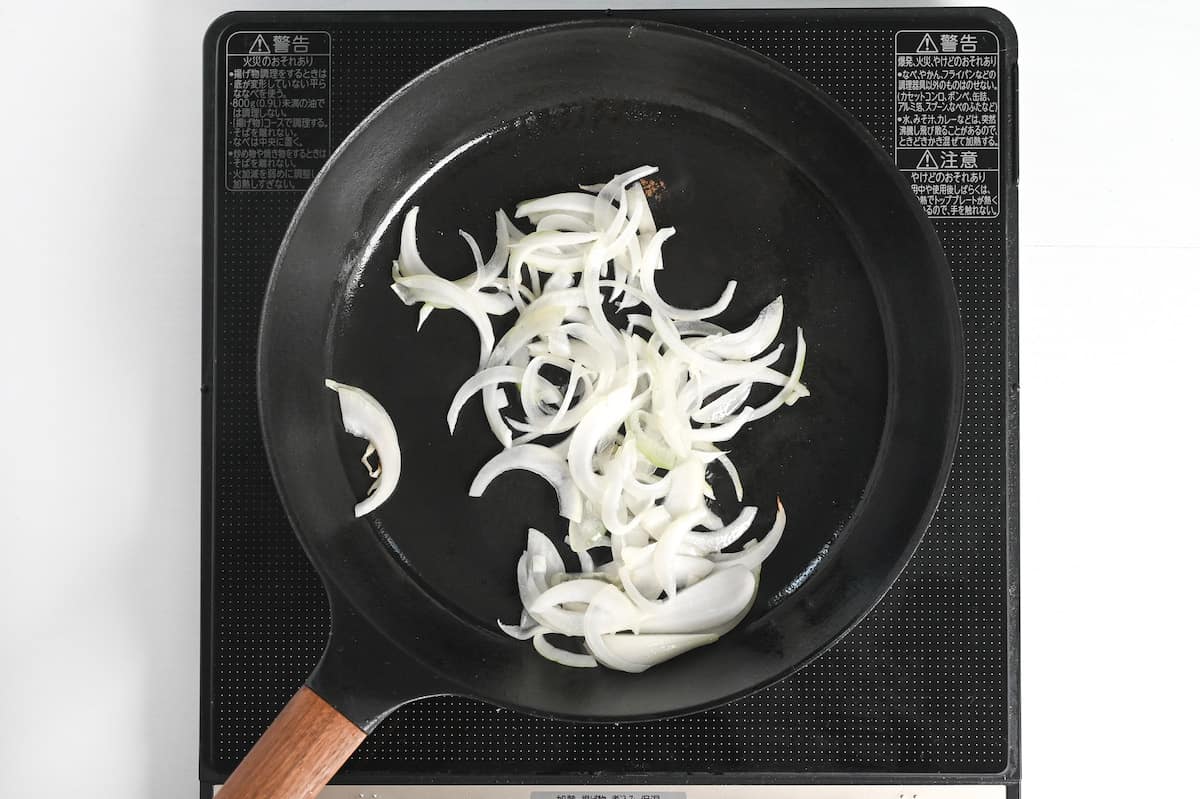
Once the onions are cooked, add the pork and marinade to the pan. Fry until the pork is browned and cooked through.
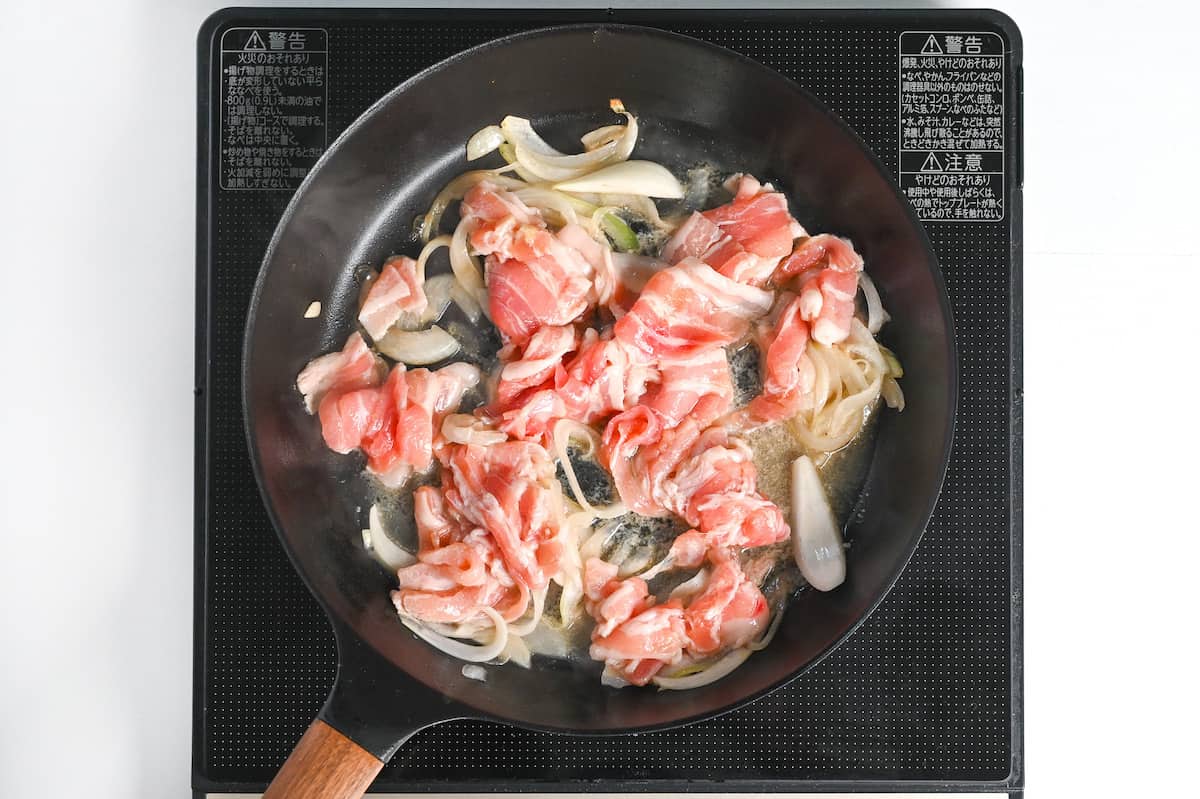
While you’re waiting, cook the udon noodles according to the instructions on the packaging. Once the pork is cooked through, remove the pan from the heat and set aside.
Place the cooked udon in serving bowls and add the dashi broth from earlier. (If the broth has already cooled down, reheat it on the stove.)
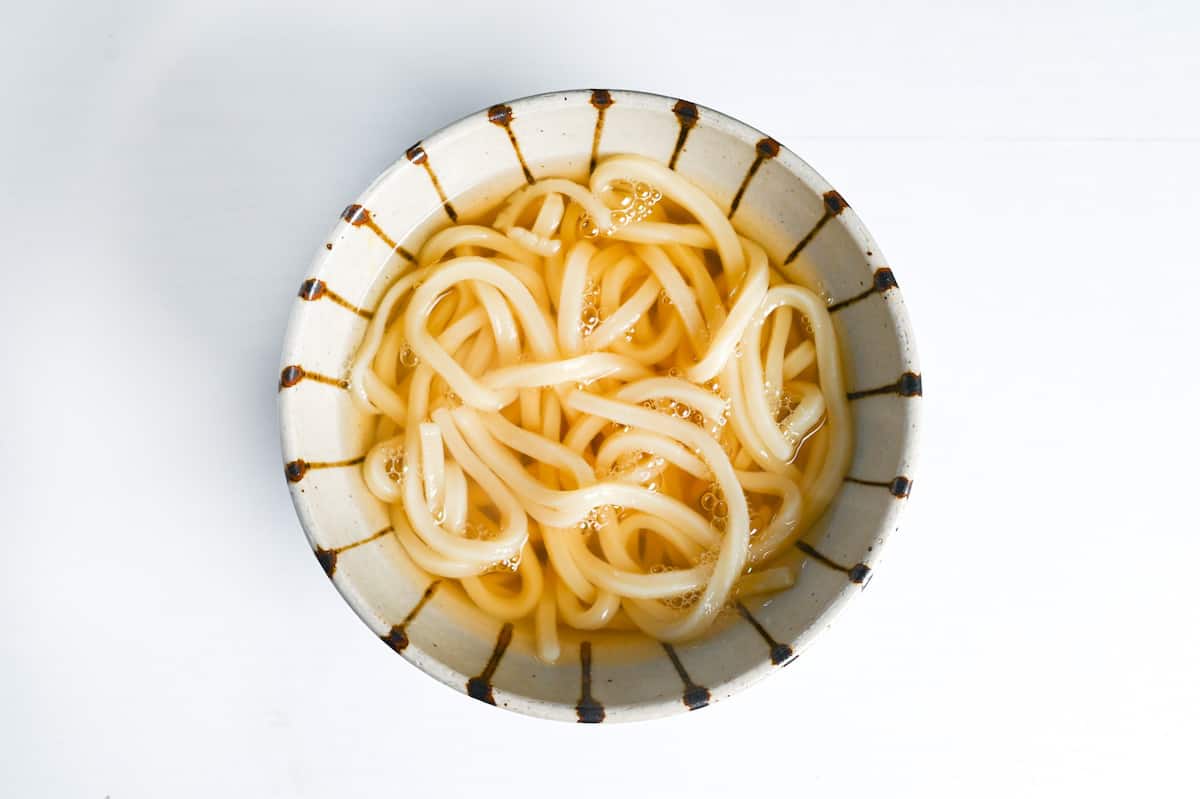
Divide the pork and onions evenly between each bowl and distribute the leftover juices from the pan evenly over each serving.
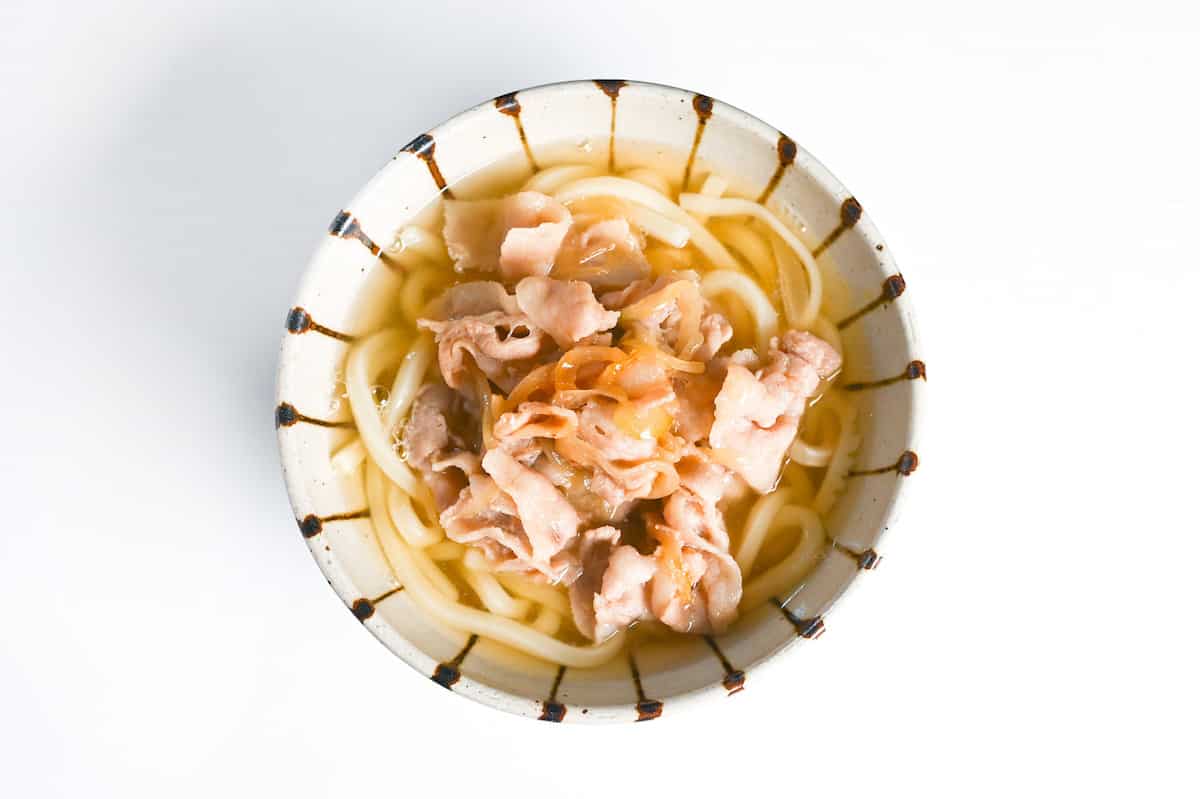
Top with slices of kamaboko (Japanese fishcakes), thinly sliced green onion and a sprinkling of shichimi togarashi.
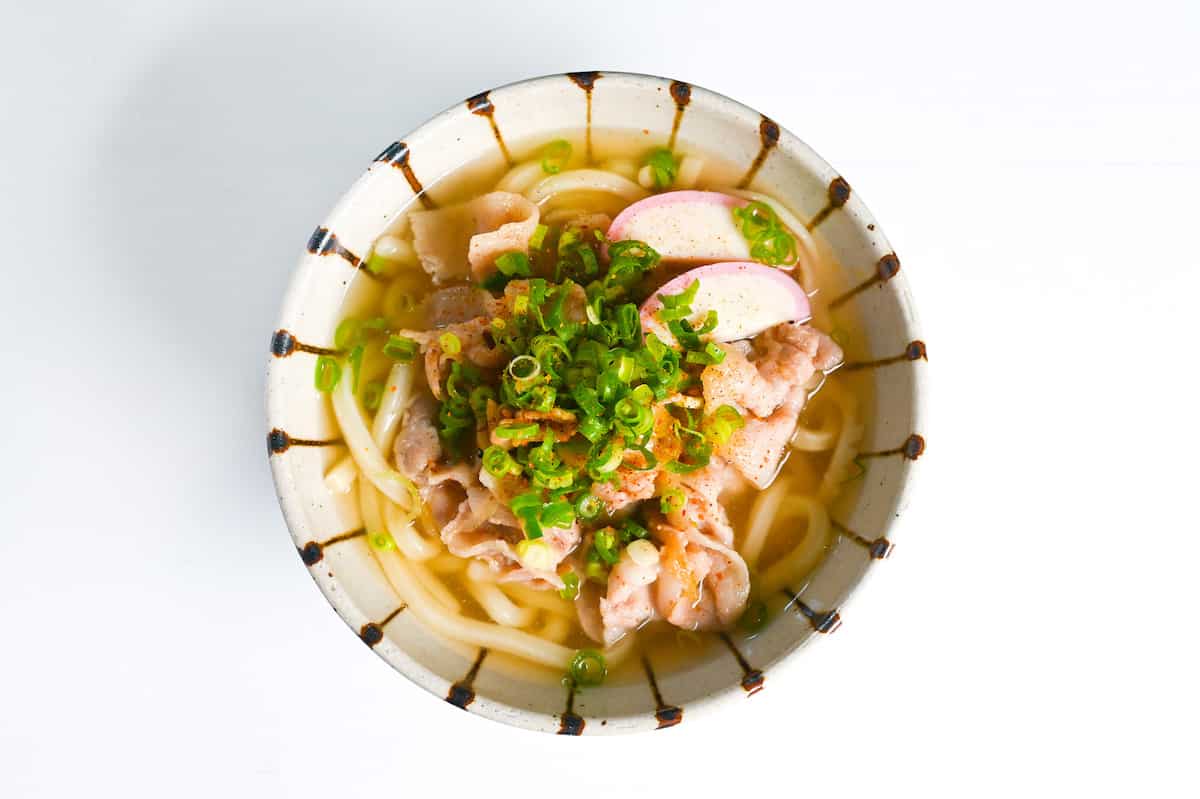
Enjoy!
Jump to Full Recipe MeasurementsI hope you enjoy this Pork Udon recipe! If you try it out, I’d really appreciate it if you could spare a moment to let me know what you thought by giving a review and star rating in the comments below. It’s also helpful to share any adjustments you made to the recipe with our other readers. Thank you!
More Udon Recipes
- Shrimp Tempura Udon
- Kake Udon (Simple Udon Noodle Soup)
- Tori Nanban Udon (Chicken Udon)
- Curry Udon
Want more inspiration? Explore my Udon Roundup Post for a carefully selected collection of tasty udon recipe ideas to spark your next meal!
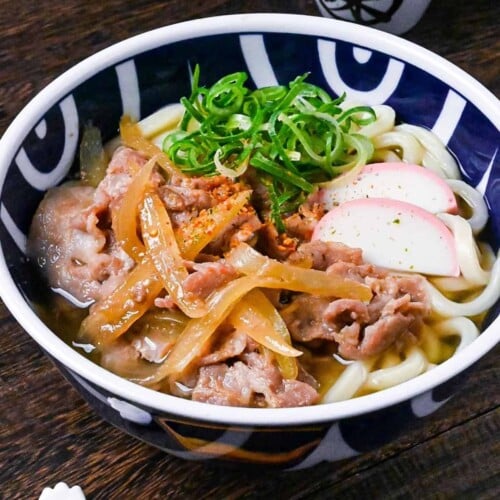
Pork Udon Noodle Soup (Butaniku Udon)
Ingredients
Marinating the pork
- 150 g thin sliced pork belly
- 1 tbsp shiro dashi or light soy sauce
- 1 tbsp mirin
- 1 tsp oyster sauce
- ½ tsp sugar
- ½ tsp ginger paste or fresh grated ginger
- 50 ml water
- ¼ yellow onion cut into thin wedges
- ½ tsp salt
Broth
- 500 ml dashi stock check out my homemade dashi stock recipe here
- 1 tbsp shiro dashi or light soy sauce
- 1 tbsp mirin
- 1 tsp sugar
Cooking / Serving
- 1 tsp cooking oil
- 2 portions udon noodles
- finely chopped green onions to garnish
- kamaboko fish cake optional
- Japanese chili powder (shichimi togarashi) (shichimi togarashi) optional
Instructions
Marinating Pork and Onion
- Place 150 g thin sliced pork belly into a container and add 1 tbsp shiro dashi, 1 tbsp mirin, 1 tsp oyster sauce, ½ tsp sugar and ½ tsp ginger paste and 50 ml water. Allow to marinade for at least 10 minutes.

- In a separate bowl, add ¼ yellow onion (sliced), ½ tsp salt and mix well. Set aside until it's time to cook.

Making the broth
- Add 500 ml dashi stock, 1 tbsp shiro dashi (or soy sauce), 1 tbsp mirin and 1 tsp sugar to a pot and heat on medium. Boil for 1-2 minutes then turn off the heat. Leave the pot on the stove and place a lid on top to keep it warm.

Cooking
- Heat a pan on medium, once hot add 1 tsp cooking oil and the salted onion. Fry until softened to your liking.

- Add the pork belly and marinade to the pan and fry everything together until the meat is browned.

- While the meat and onions are cooking, boil 2 portions udon noodles in a separate pot. Once cooked, drain and wash with fresh boiling water to remove the excess starch. Divide them into bowls and add the broth.

- Place the pork and onions on top of the udon, and distribute the leftover juices from the pan evenly over each serving.

- Add two slices of kamaboko fish cake to each bowl, and sprinkle with finely chopped green onions and Japanese chili powder (shichimi togarashi) (optional).

- Mix well before eating and enjoy!
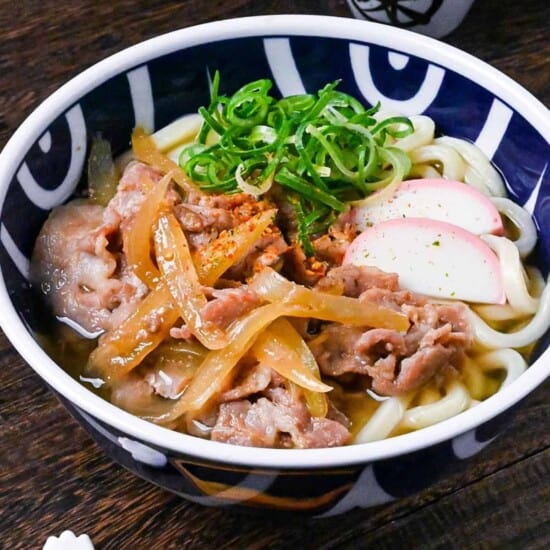


Leave a rating and a comment